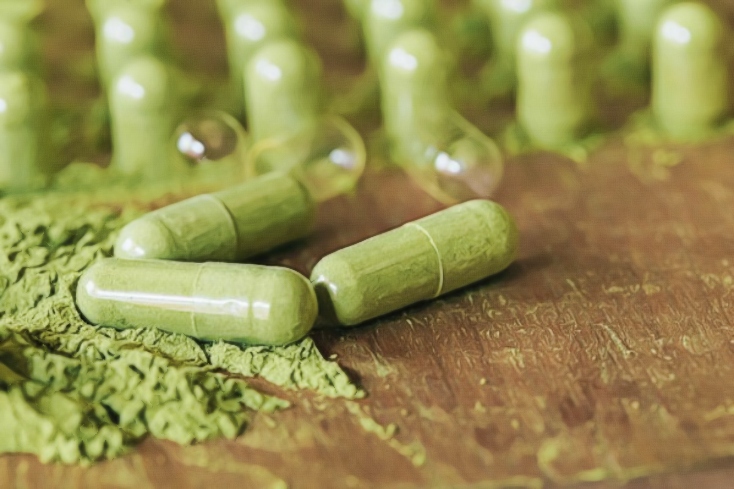People have been relying on plant-derived materials to treat a myriad of ailments and diseases throughout history, with the cannabis plant being the most enduring and booming among the herbal remedies.
Even as society advances in technology and welcomes innovative medication, these herbal alternatives are an attractive alternative to mainstream medical care thanks to their consistent effects.
Signs of Kratom Withdrawal
It’s easy to become dependent on kratom since it works similarly to opioid and morphine, which means stopping cold turkey can trigger similar withdrawal symptoms. According to the DEA, quitting kratom can result in the following tell-tale signs:
- Runny nose
- Muscle aches
- Joint or bone pain
- Jerky movements of arms and legs
- Hostility
- Aggression
- Extreme mood swings
- Depression
- Anxiety
- Insomnia
- Constipation
- Chills
- Sweating
- Lethargy
- Gooseflesh
- Nausea
- Headaches
- Weight loss
- Skin discoloration
For patients who are severely addicted to kratom, straying away from the misleading medicine can trigger a psychotic breakdown, leading to delusions, hallucinations, confusion, and even seizures in the worst-case scenario.
How Long Does Kratom Withdrawal Symptoms Last?
These red flags can manifest within 6 to 12 hours from the last session and can worsen after two to three days pass. The aggravating side-effects can last up to ten days, especially for a victim who is highly kratom-dependent.

Understanding Kratom High
Kratom is often advertised as a health-boosting food supplement that can spike your energy, pick up the mood, relieve pain, and serve as a reliable antidote for opioid withdrawal. When you ingest kratom, either in its powder form, capsules, or drink it as tea, you can expect opioid-like analgesic effects to take over.
The stimulating effects introduce a sense of euphoria that brings the mind to a cerebral flight, which can paint a positive streak on the bluest of moods. Beyond its mood-enhancing high, the factor that makes it universally appealing and easy to abuse is its similarity to the pain-reducing effects of opioids.
It achieves this effect by binding to the brain’s opiate receptors, interacting with the substances found in the kratom’s leaves such as the mitragynine and 7-α-hydroxy mitragynine. In most cases, ingesting, drinking, or smoking kratom can result in a two-pack punch in the head and body – starting with an energetic kick and ending with a sedative effect.
The Rise of Kratom Use
Another herb that is well-coveted for its impressive anxiolytic and anti-inflammatory benefits is Kratom, which is typically extracted from the leaves of a tropical tree that is native to South Asia and Thailand.
Seeing as it encompasses tropical countries, it takes on large fan leaves that you can easily reach despite it being tree-like. It belongs to the Mitragyna genus of the Rubiaceae family, which is iconic for producing coffee and gardenia plants.
The plant’s uncanny ability to manage pain and ease distressing symptoms of depression or anxiety make it a contender for cannabis, that’s why its popularity goes beyond borders as it has become increasingly available in the smoke shops around the United States and Europe.
Exploring Kratom’s Stimulant and Sedative Effects
When taking even just a small dosage of kratom, the mind-numbing effects can manifest within ten minutes and introduce the following stimulating sensations:
- Alertness
- Giddiness
- Sociability
- Giggly
- Reduced motor coordination
These effects can last up to 1 ½ hour, according to the European Monitoring Centre for Drugs and Drug Addiction (EMCDDA). Meanwhile, taking higher doses between 10 to a whopping 25 grams each session can result in a heavy-hitting, sedative feeling, one that softens the euphoric start with a calming high that can last for six hours.
Is Kratom Legal?
Just like many alternative medicines, its legality varies depending on the country. The United States, for example, has legalized kratom and is considered a dietary supplement that can increase energy, ease sore muscles, and boost productivity within the right dose.
Places like Australia, Malaysia, and other surrounding European Union countries do not support the legalization and production of kratom since it is seen as a “drug of concern” by the Drug Enforcement Administration (DEA).
Taking kratom is a massive risk since people can easily grow dependent on the herb, especially recovering heroin or opioid addicts who made the switch to kratom to combat the impending withdrawal symptoms.
The Bottom Line: Understanding the Positive Effects of Kratom for Anxiety and its Potential for Abuse
Now that the legalization of medicinal plants like cannabis is pushing through in several countries across the world, it makes sense how the wellness community is putting the spotlight on the potential healing properties of similar herbs.

This paves the way for the booming popularity of herbal alternatives like kratom, which is circulating worldwide as it promises pain relief and euphoria to its users. It’s easy to assume that these remedies are safe since they are derived from organic sources such as plants, but remember that it lacks enough research to make it acceptable for the public.
When it comes to treating anxiety, depression, chronic pain and other chronic conditions, it’s always better to seek medical attention from your doctor instead of relying on under-the-table treatments that are not supported by the FDA.
Find the Best Addiction Treatments
The road to sobriety is a challenging one, but having the right treatment program to support your journey can make a world of difference in your progress. We can help guide you every step of the way by connecting you with the best rehab centers in multiple states in the USA.
Source:
http://www.emcdda.europa.eu/publications/drug-profiles/kratom




